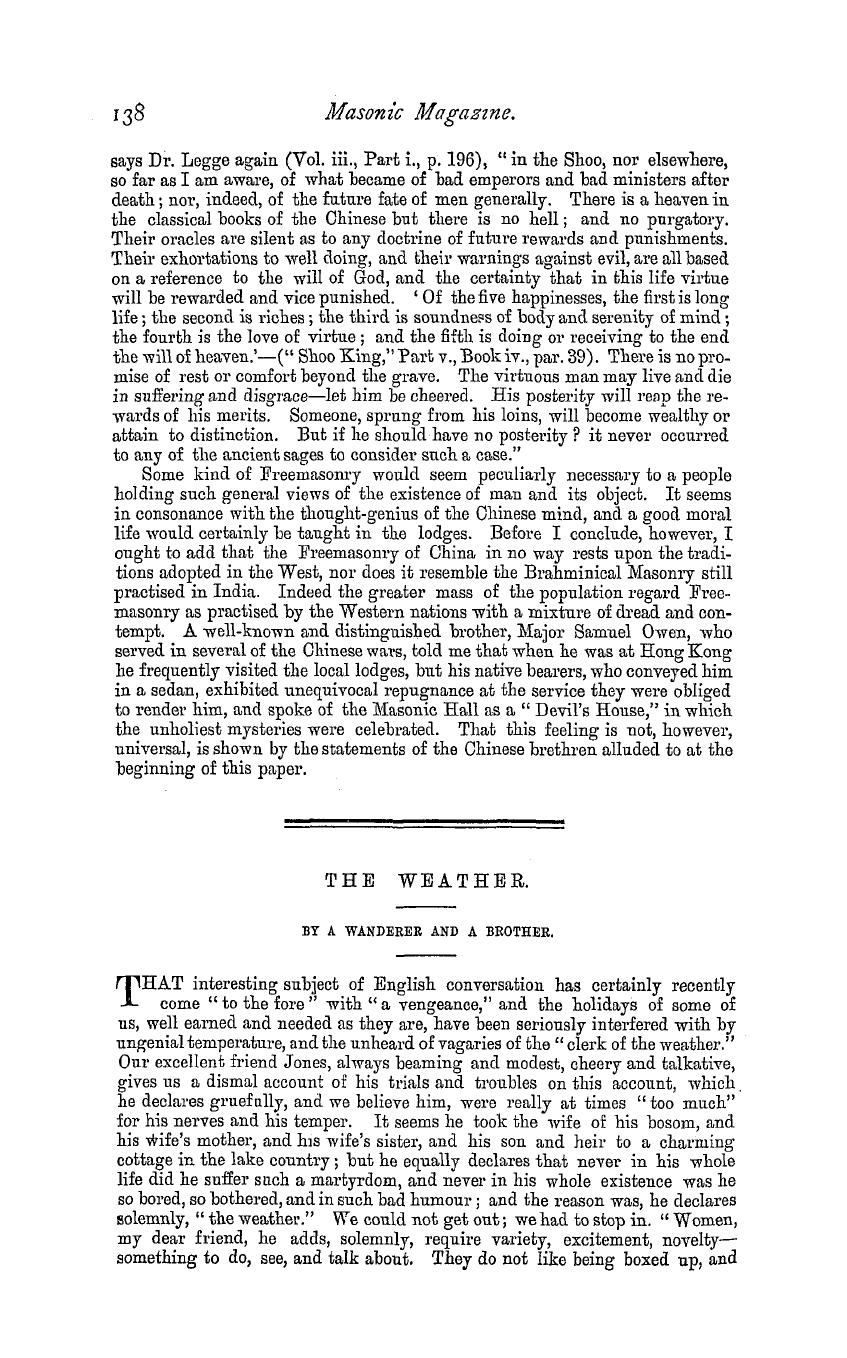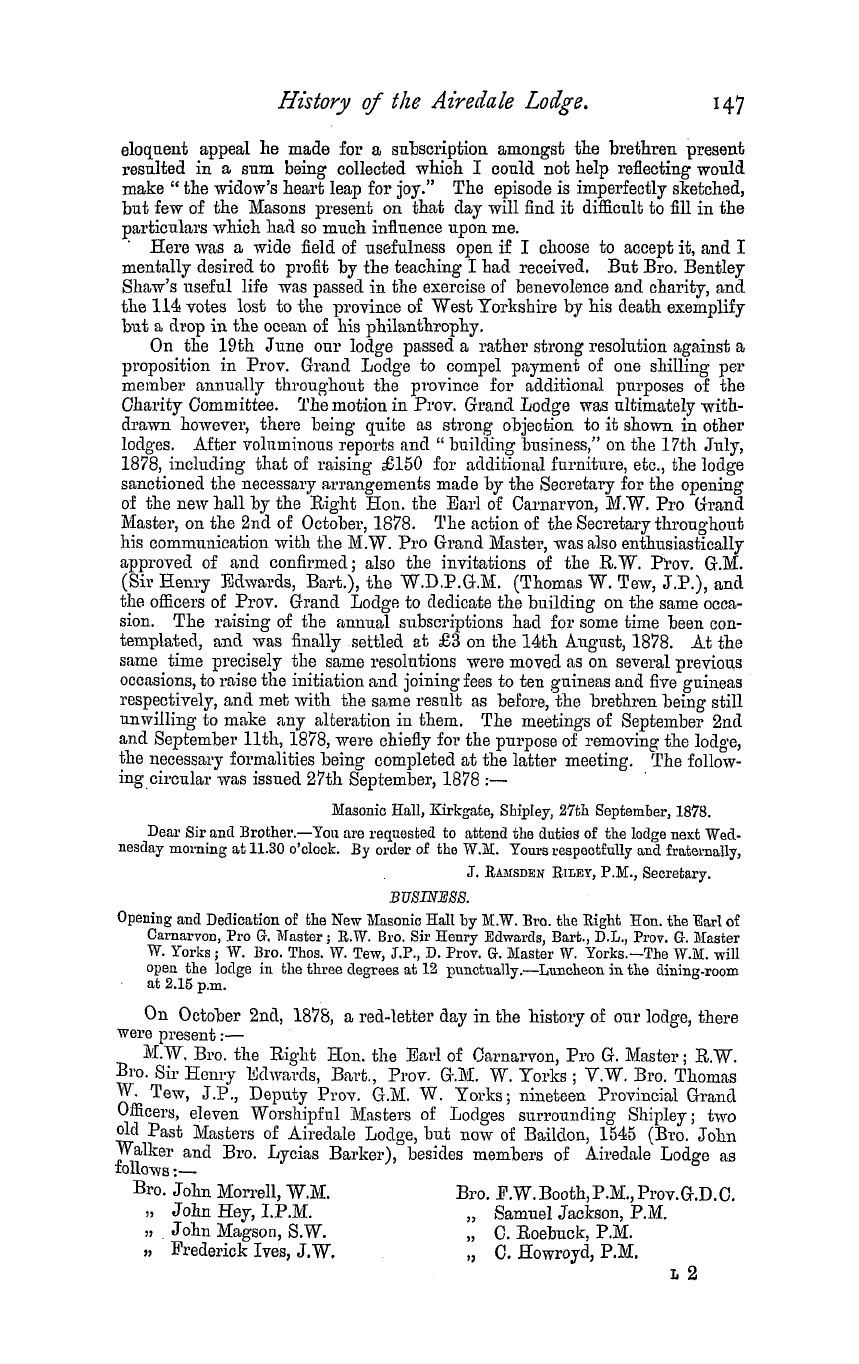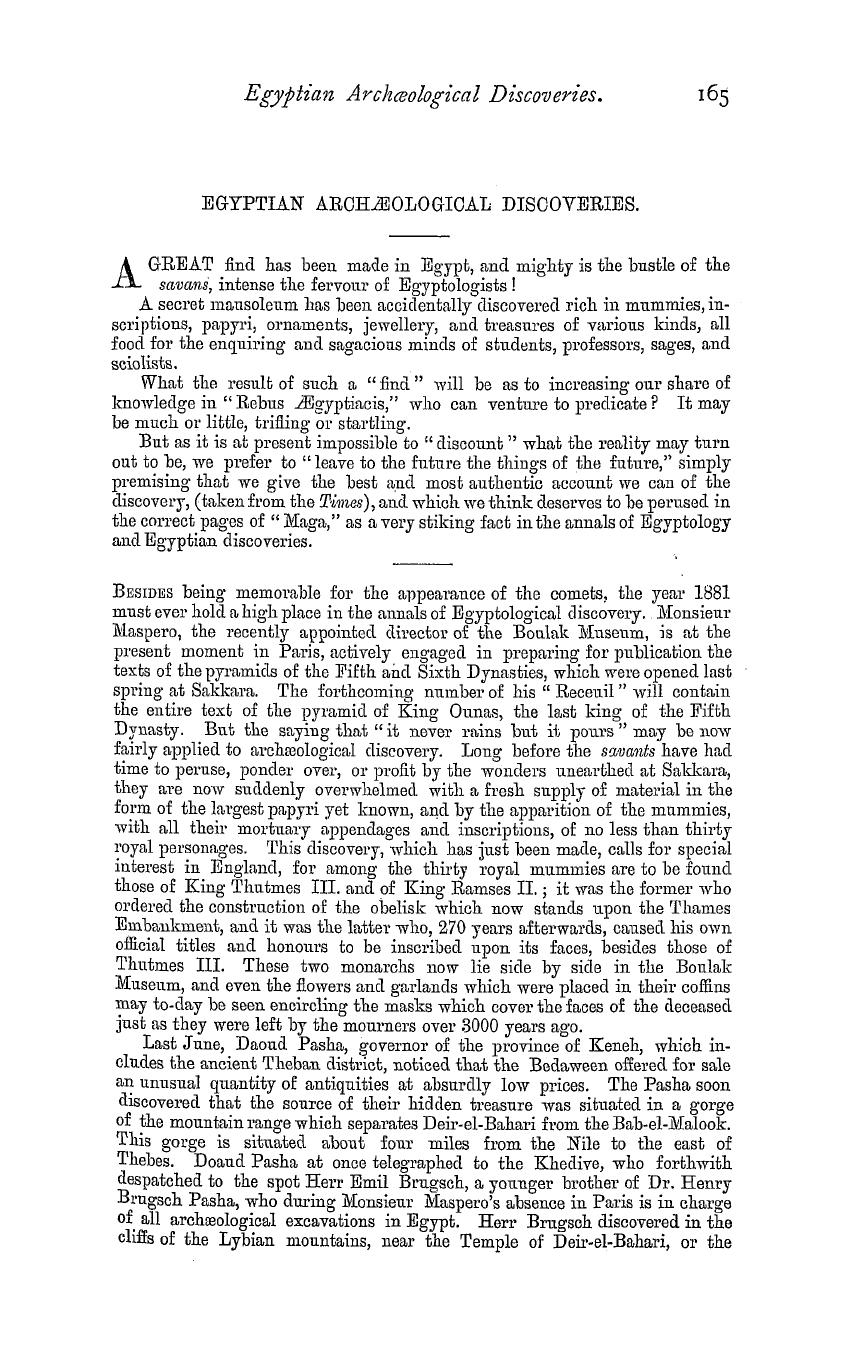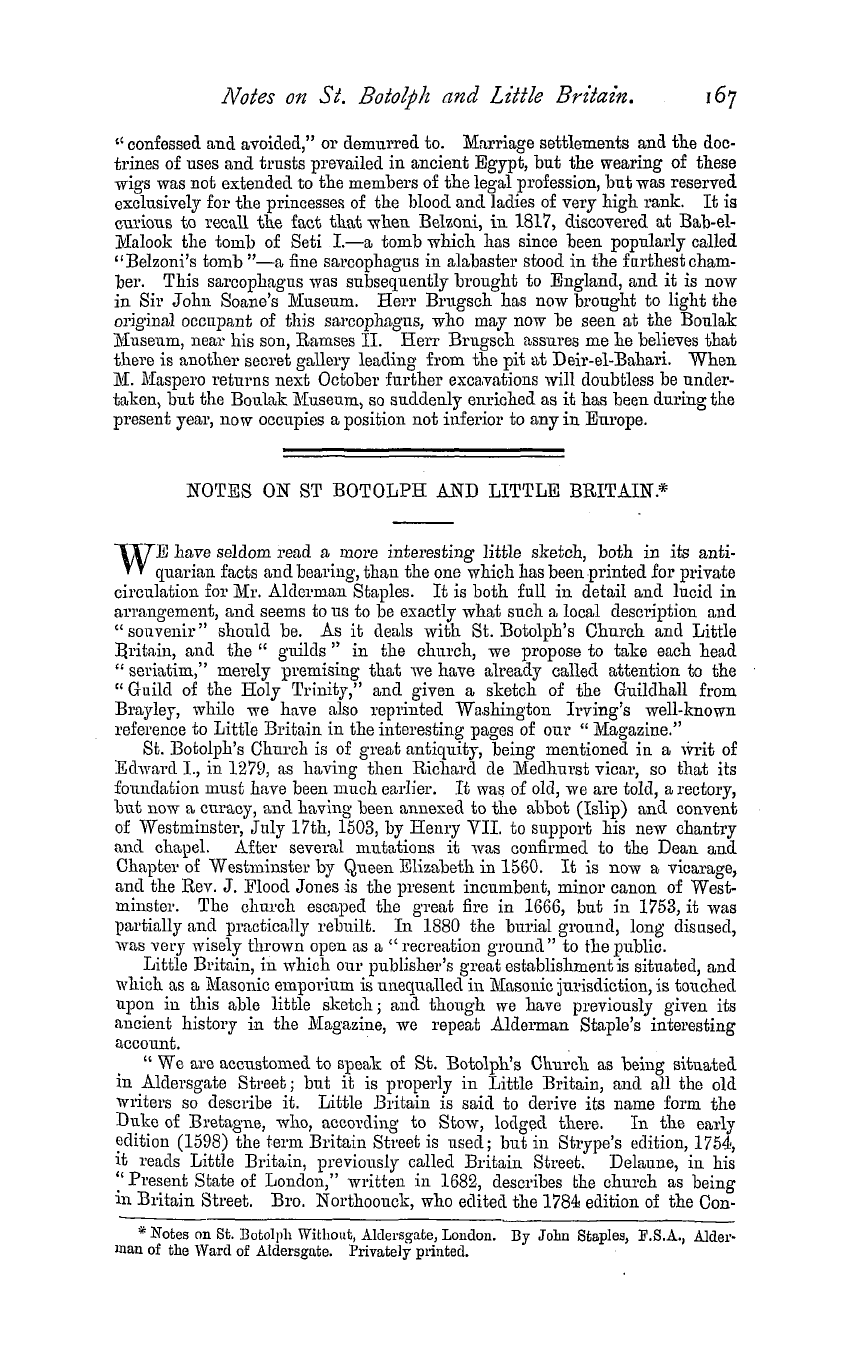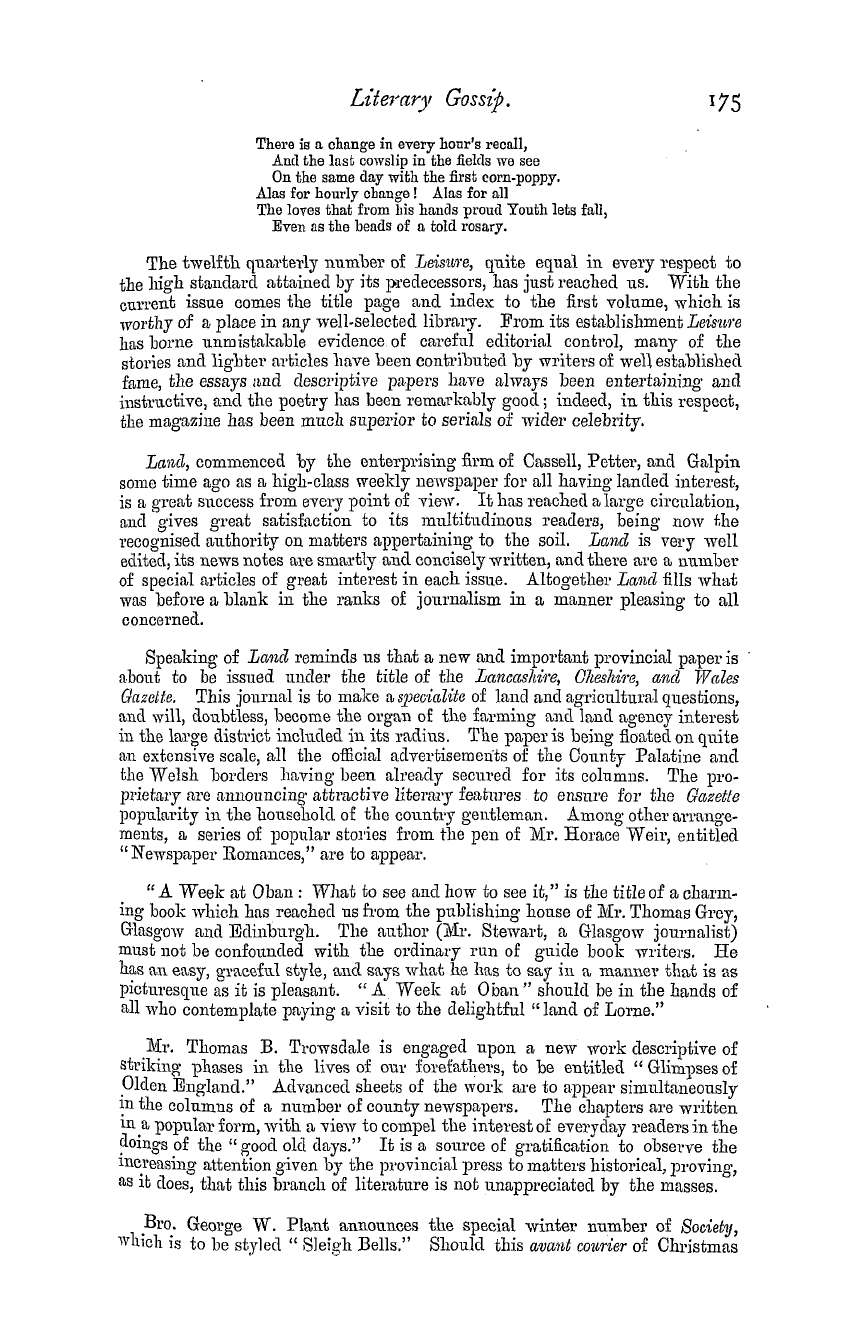Note: This text has been automatically extracted via Optical Character Recognition (OCR) software.
The History Of Selby, Its Abbey, And Its Masonic Associations.
In 1834 the Hull ancl Selby Railway was opened , one of the first in the kingdom . In 1878 our M . W . G . M . paid a short visit to Bro . Lord Londesborough , and hacl a day ' s shooting here , when the town was illuminated , and he received a heartYorkshire welcome .
y In Selby we have the usual institutions of a small agricultural market town , of which not the least is , I venture to say , the Masonic Lodge of St . , Germain . The arms of the abbey , ancl since of the town , are—sable , three swans argent . I am glad to be able to say that that virtueso endeared to every Mason ' s
, heart—I mean charity—is not unknown amongst us , for we have several charities , the majority of which are vested in a Board called the Feoffees of Selby ; the other charities being the Blue Coat Charity , the Brown Coat , Chamberlain ' s Charity , ancl Hudson ' s Charity . The oldest part of the town is the Church Hill , where the original parish
church stood ; ancl a few years ago , whilst digging down for the foundation of a house , some half-dozen coffins were found , composed of trunks of trees half split , some pieces of tiles and hazel-twigs , also two pieces of stone carving , which evidently belonged to the orig inal church . Close to my house is the landing-place sometimes called the Abbot ' s Staith , to which I have before referred . Further north is Bondgate , which was occupied b y the lord ' s tenants ,
a class of men equivalent to copyholders of the present day . Retracing our steps to the corner of Mitigate , we come into a spacious street called by three names— -Micklegate , Broad Street , ancl Finkle Street . Here was erected the Norman castle of King Stephen ' s time , traces of which were discovered whilst excavating for drainage in 1854 . In connection with this drainage an ancient sea-cobble pavement was discovered in the adjoining streetcalled Gowthorpe
, , about 3 feet 6 inches below the surface . At the southern end of this street was the old Postern Gate , which led to the property now called Portholme . The abbot ' s house was situate in what is now the Crescent . This was the extent of Selby at the time of the dissolution of the monastery . The population in 1574 was about 1390 , in 1801 , 2361 , and at the 1881 census , 6031 .
Apart from the abbots of Selby and their time , the town of Selby cannot be said to have produced many distinguished men , but the following were natives of Selby : —• Thomas Johnson , an English botanist of the seventeenth century ; his chief work was anew edition of " Gerard ' s Herbal . " He went into the army on behalf of the king and attained the rank of Lieut .-Colonel , and died from the effects of
a shot received near Basingstoke , in September , 1644 . Smithson Tenant , a celebrated English chemist , born in 1761 . He contributed many valuable papers to the Royal Society , of which he was a Fellow . Dr . Bateman , a distinguished civil servant ancl lawyer , born 1797 , ancl ultimately Assistant Secretary of the Board of Excise , London . He wrote many valuable legal works .
With respect to the Masonic history of the town , there is not , unfortunately , a great deal to be said . No doubt amongst the numerous builders of the abbey were many Freemasons ; indeed , from the proximity to our Great Mother Lodge at York , it could not fail to be so . Bro . Fort , in his excellent work "The Early History ancl Antiquity of Freemasons "—a work which should be in every Freemason ' s library—has on page 330 etc . iven some illustrations of
, , g Masonic marks taken from the abbey . I may add that I have in my possession a stone which I found whilst altering my house which bears Masonic marks , and which I shall be most happy to show any of the brethren . The earliest records we have of Freemasonry in modern times are to be found in the minute book of the Mariners' Lodge , which was consecrated on the 7 th June , 1799 , and which lasted apparently until about 1814 ; and I commend to
Note: This text has been automatically extracted via Optical Character Recognition (OCR) software.
The History Of Selby, Its Abbey, And Its Masonic Associations.
In 1834 the Hull ancl Selby Railway was opened , one of the first in the kingdom . In 1878 our M . W . G . M . paid a short visit to Bro . Lord Londesborough , and hacl a day ' s shooting here , when the town was illuminated , and he received a heartYorkshire welcome .
y In Selby we have the usual institutions of a small agricultural market town , of which not the least is , I venture to say , the Masonic Lodge of St . , Germain . The arms of the abbey , ancl since of the town , are—sable , three swans argent . I am glad to be able to say that that virtueso endeared to every Mason ' s
, heart—I mean charity—is not unknown amongst us , for we have several charities , the majority of which are vested in a Board called the Feoffees of Selby ; the other charities being the Blue Coat Charity , the Brown Coat , Chamberlain ' s Charity , ancl Hudson ' s Charity . The oldest part of the town is the Church Hill , where the original parish
church stood ; ancl a few years ago , whilst digging down for the foundation of a house , some half-dozen coffins were found , composed of trunks of trees half split , some pieces of tiles and hazel-twigs , also two pieces of stone carving , which evidently belonged to the orig inal church . Close to my house is the landing-place sometimes called the Abbot ' s Staith , to which I have before referred . Further north is Bondgate , which was occupied b y the lord ' s tenants ,
a class of men equivalent to copyholders of the present day . Retracing our steps to the corner of Mitigate , we come into a spacious street called by three names— -Micklegate , Broad Street , ancl Finkle Street . Here was erected the Norman castle of King Stephen ' s time , traces of which were discovered whilst excavating for drainage in 1854 . In connection with this drainage an ancient sea-cobble pavement was discovered in the adjoining streetcalled Gowthorpe
, , about 3 feet 6 inches below the surface . At the southern end of this street was the old Postern Gate , which led to the property now called Portholme . The abbot ' s house was situate in what is now the Crescent . This was the extent of Selby at the time of the dissolution of the monastery . The population in 1574 was about 1390 , in 1801 , 2361 , and at the 1881 census , 6031 .
Apart from the abbots of Selby and their time , the town of Selby cannot be said to have produced many distinguished men , but the following were natives of Selby : —• Thomas Johnson , an English botanist of the seventeenth century ; his chief work was anew edition of " Gerard ' s Herbal . " He went into the army on behalf of the king and attained the rank of Lieut .-Colonel , and died from the effects of
a shot received near Basingstoke , in September , 1644 . Smithson Tenant , a celebrated English chemist , born in 1761 . He contributed many valuable papers to the Royal Society , of which he was a Fellow . Dr . Bateman , a distinguished civil servant ancl lawyer , born 1797 , ancl ultimately Assistant Secretary of the Board of Excise , London . He wrote many valuable legal works .
With respect to the Masonic history of the town , there is not , unfortunately , a great deal to be said . No doubt amongst the numerous builders of the abbey were many Freemasons ; indeed , from the proximity to our Great Mother Lodge at York , it could not fail to be so . Bro . Fort , in his excellent work "The Early History ancl Antiquity of Freemasons "—a work which should be in every Freemason ' s library—has on page 330 etc . iven some illustrations of
, , g Masonic marks taken from the abbey . I may add that I have in my possession a stone which I found whilst altering my house which bears Masonic marks , and which I shall be most happy to show any of the brethren . The earliest records we have of Freemasonry in modern times are to be found in the minute book of the Mariners' Lodge , which was consecrated on the 7 th June , 1799 , and which lasted apparently until about 1814 ; and I commend to





